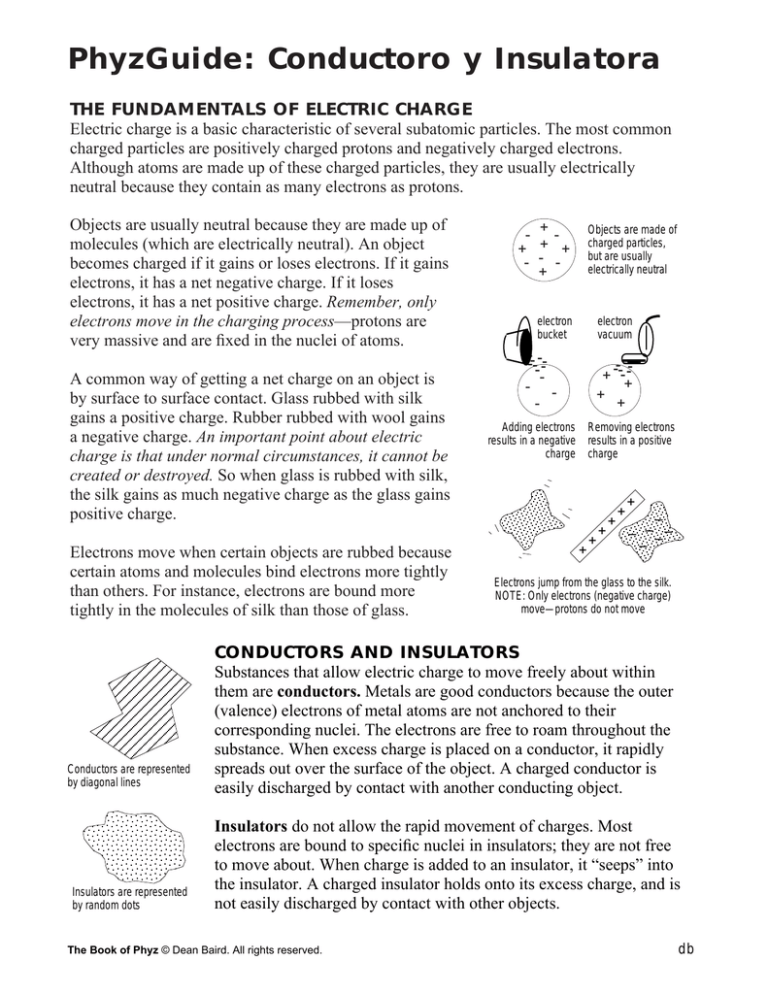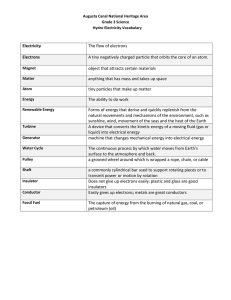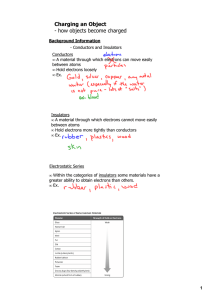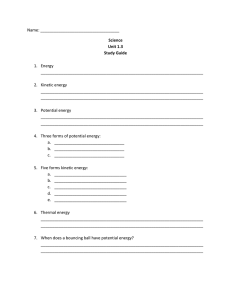
PhyzGuide: Conductoro y Insulatora
THE FUNDAMENTALS OF ELECTRIC CHARGE
Electric charge is a basic characteristic of several subatomic particles. The most common
charged particles are positively charged protons and negatively charged electrons.
Although atoms are made up of these charged particles, they are usually electrically
neutral because they contain as many electrons as protons.
Objects are usually neutral because they are made up of
molecules (which are electrically neutral). An object
becomes charged if it gains or loses electrons. If it gains
electrons, it has a net negative charge. If it loses
electrons, it has a net positive charge. Remember, only
electrons move in the charging process—protons are
very massive and are fixed in the nuclei of atoms.
A common way of getting a net charge on an object is
by surface to surface contact. Glass rubbed with silk
gains a positive charge. Rubber rubbed with wool gains
a negative charge. An important point about electric
charge is that under normal circumstances, it cannot be
created or destroyed. So when glass is rubbed with silk,
the silk gains as much negative charge as the glass gains
positive charge.
Electrons move when certain objects are rubbed because
certain atoms and molecules bind electrons more tightly
than others. For instance, electrons are bound more
tightly in the molecules of silk than those of glass.
Conductors are represented
by diagonal lines
Insulators are represented
by random dots
- ++ + +
- - +
Objects are made of
charged particles,
but are usually
electrically neutral
electron
bucket
electron
vacuum
-- ---- - -
- -+ --- +
+
+
Removing electrons
results in a positive
charge
Adding electrons
results in a negative
charge
+
+
+
+
+
+
–
– –––
–
Electrons jump from the glass to the silk.
NOTE: Only electrons (negative charge)
move—protons do not move
CONDUCTORS AND INSULATORS
Substances that allow electric charge to move freely about within
them are conductors. Metals are good conductors because the outer
(valence) electrons of metal atoms are not anchored to their
corresponding nuclei. The electrons are free to roam throughout the
substance. When excess charge is placed on a conductor, it rapidly
spreads out over the surface of the object. A charged conductor is
easily discharged by contact with another conducting object.
Insulators do not allow the rapid movement of charges. Most
electrons are bound to specific nuclei in insulators; they are not free
to move about. When charge is added to an insulator, it “seeps” into
the insulator. A charged insulator holds onto its excess charge, and is
not easily discharged by contact with other objects.
The Book of Phyz © Dean Baird. All rights reserved.
db




